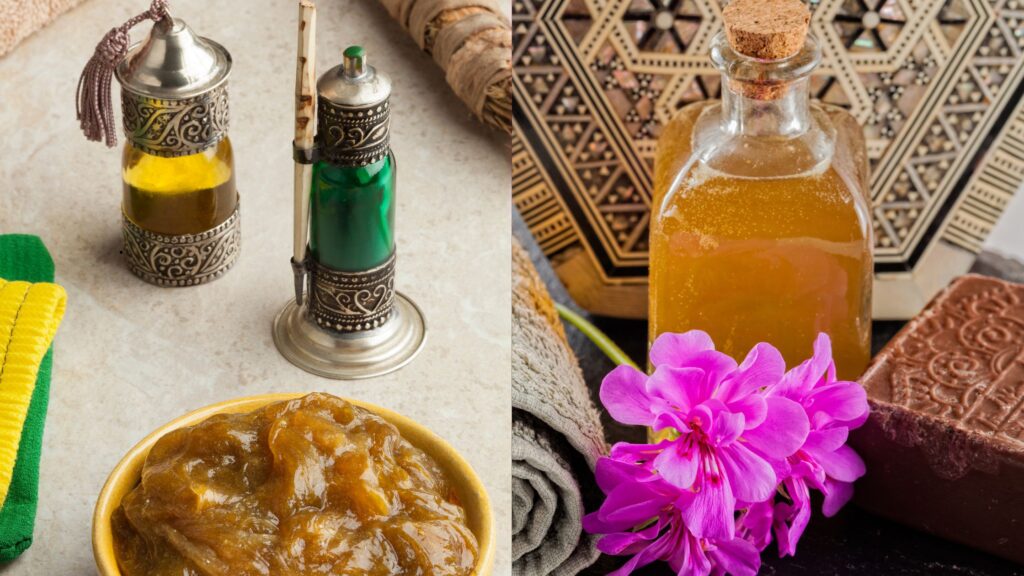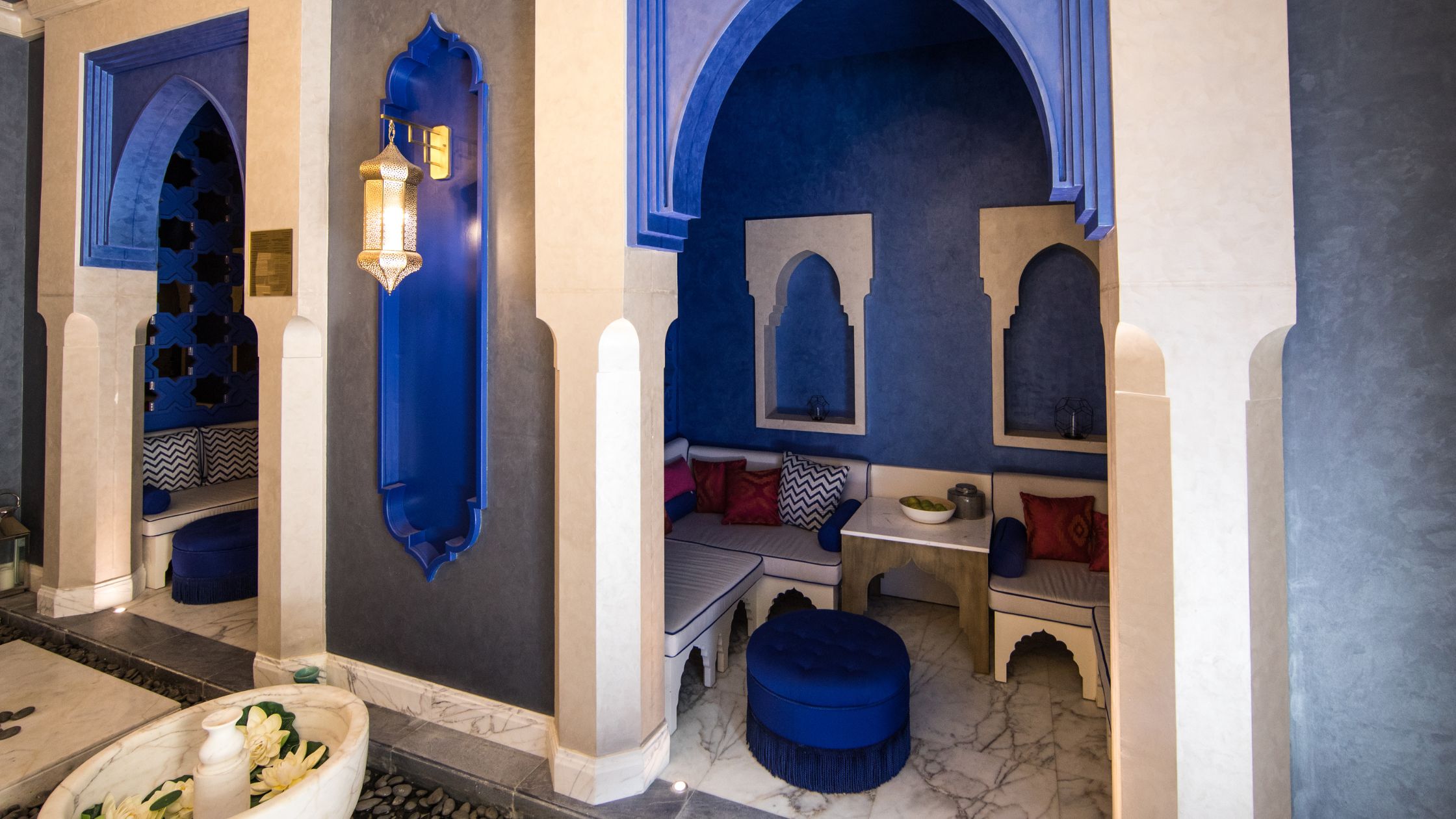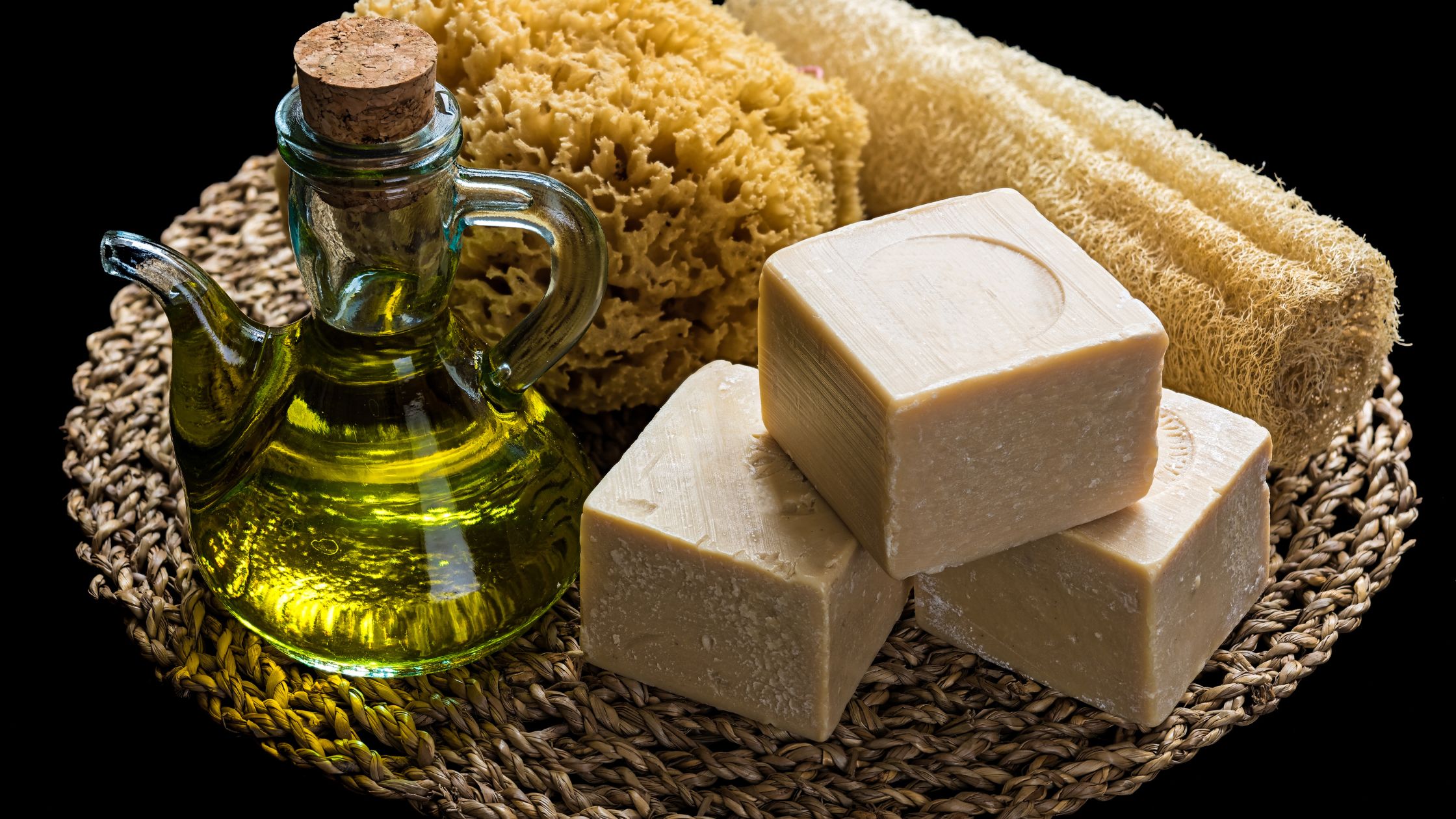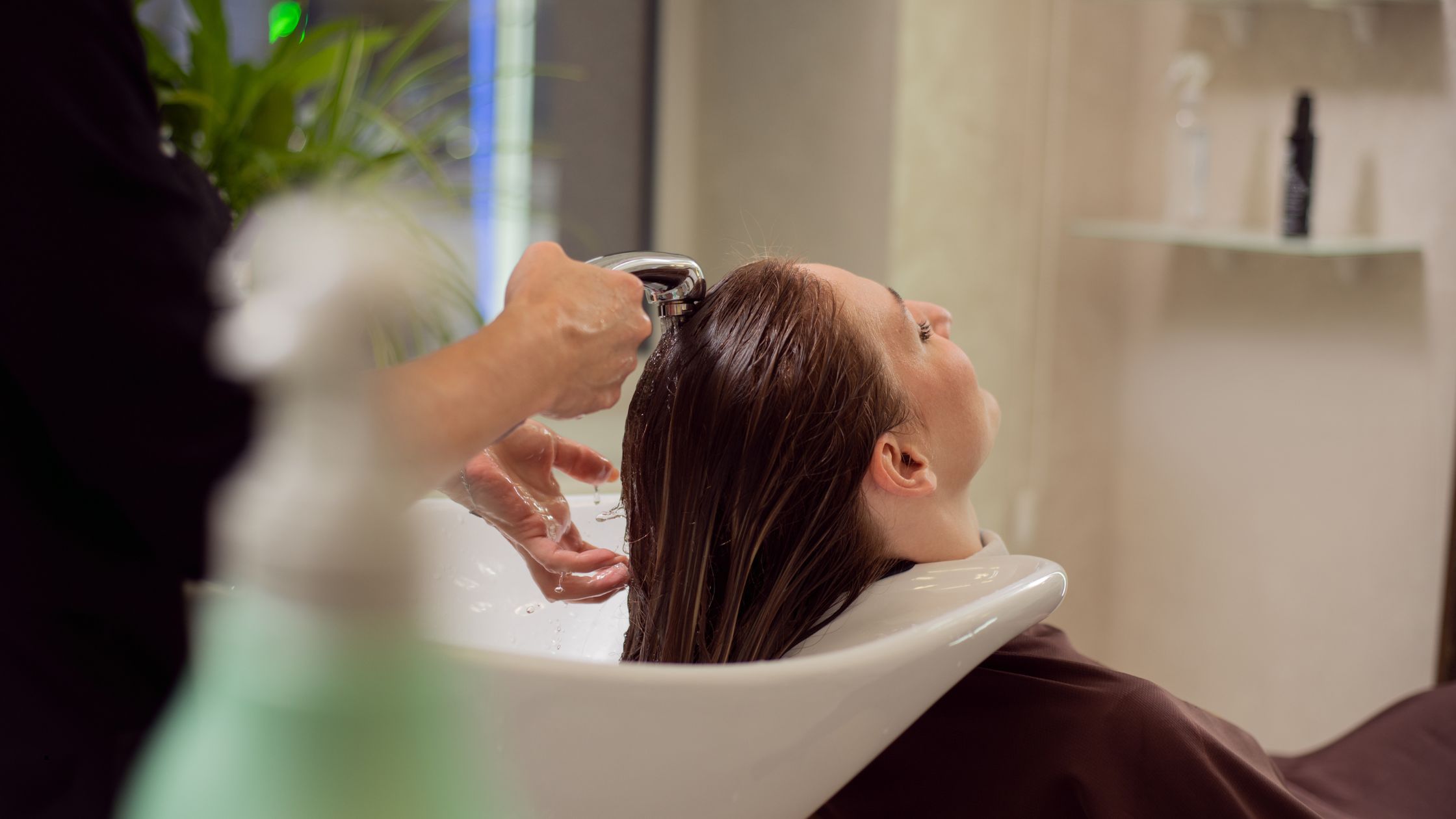The steam rises, the marble gleams, and centuries-old traditions whisper through the humid air of the hammam. But beneath the surface of relaxation and cleansing lies a complex web of unspoken rules, ancient superstitions, and cultural boundaries that even seasoned hammam-goers rarely discuss.
These hammam taboos have shaped bath house culture across the Middle East, North Africa, and Turkey for generations, creating an intricate social code that governs everything from where you sit to what you say.
The Evil Eye And Mirror Madness
One of the most persistent hammam taboos revolves around mirrors and reflective surfaces. Traditional hammam etiquette strictly forbids looking at yourself or others in any reflective surface within the bathhouse walls. This belief stems from the ancient fear of the evil eye – the notion that admiring your own body or casting envious glances at others could invite supernatural misfortune.
In many Turkish and Moroccan hammams, you’ll notice that mirrors are either completely absent or positioned in areas where bathers are fully clothed. Attendants will often cover or turn away small mirrors during treatments, and experienced hammam visitors instinctively avoid catching their reflection in polished marble or metal fixtures.
The superstition extends beyond vanity. Many believe that souls are particularly vulnerable when the body is cleansed and purified, making the hammam a spiritual battleground where evil spirits might enter through reflected images. Breaking this taboo supposedly brings seven years of skin problems, relationship troubles, or financial difficulties.
The Threshold Ritual: Left Foot First
Entering a hammam incorrectly ranks among the most serious hammam taboos, though few outsiders know the proper protocol. Traditional hammam culture demands that you enter the bathing chamber with your left foot first while reciting a specific prayer or blessing. This practice originates from Islamic tradition, where the left foot leads when entering places associated with purification and bodily functions.
The reasoning goes deeper than religious observance. Hammam veterans believe that entering right-foot-first disrupts the flow of positive energy within the space and can cause the water temperature to fluctuate unpredictably throughout your visit. Some attendants will actually stop you at the threshold if they notice you’ve stepped in incorrectly, asking you to exit and re-enter properly.
In Syrian and Lebanese hammams, this taboo extends to the exit as well – you must leave right-foot-first to seal in the purification benefits and prevent negative energy from following you home. Breaking this rule supposedly causes recurring nightmares featuring water and steam.
Blood Moon Bathing And Menstrual Mysteries
Perhaps the most controversial of all hammam taboos concerns women’s menstrual cycles and lunar phases. Traditional hammam culture maintains strict prohibitions against bathing during menstruation, but the rules extend far beyond simple hygiene concerns. Many hammams across North Africa and the Levant refuse entry to menstruating women based on beliefs about spiritual contamination and energy disruption.
The taboo intensifies during blood moons and lunar eclipses. Hammam folklore insists that bathing during these celestial events while menstruating can cause permanent skin discoloration, infertility, or attract djinn (supernatural beings). Some hammams close entirely during blood moons, while others restrict access to women over 40 who are presumed to be postmenopausal.
These practices vary significantly by region and are increasingly challenged by modern hammam operators, but they remain deeply embedded in traditional hammam culture. Regular female patrons often track lunar calendars and plan their hammam visits accordingly.
The Soap Hierarchy Secret
Every hammam maintains an invisible hierarchy based on soap types and scents, creating hammam taboos around fragrance choices that outsiders never suspect. Using the wrong soap can mark you as an amateur or, worse, show disrespect to the hammam’s spiritual atmosphere.
Rose-scented soaps are reserved for newlyweds and young women preparing for marriage proposals. Using rose soap as a married woman, divorced person, or man violates social protocols and supposedly brings romantic misfortune. Jasmine belongs to pregnant women and new mothers, while amber scents are exclusively for elderly patrons and spiritual leaders.
The most serious violation involves using black soap inappropriately. This traditional olive-based cleanser carries deep cultural significance and should only be used by those observing religious fasting, recovering from illness, or marking significant life transitions. Casual use of black soap by healthy individuals is considered deeply disrespectful and can result in social ostracism from regular hammam communities.

Water Direction And Flow Superstitions
The direction water flows during your hammam experience creates another layer of hammam taboos that govern behavior inside the bathing chamber. Traditional belief holds that water should always flow from head to toe and from right side to left side of the body to properly cleanse both physical impurities and spiritual negativity.
Pouring water upward from feet to head reverses the purification process and supposedly drives impurities back into your system rather than washing them away. Many hammam attendants will physically correct your washing technique if they observe you violating this flow pattern.
The taboo extends to communal areas where shared water vessels must be refilled in specific ways. Water should pour in clockwise circles, and the vessel should never be completely emptied before refilling. Breaking these rules allegedly causes the hammam’s water source to become spiritually contaminated, affecting all subsequent visitors.
Pregnancy And Childbirth Prohibitions
Hammam taboos surrounding pregnancy create some of the most complex and regionally specific restrictions within bathhouse culture. Pregnant women face different limitations depending on trimester, previous pregnancy history, and local traditions that vary dramatically between countries and even neighborhoods.
First-trimester restrictions often ban pregnant women entirely, based on beliefs that the intense heat and steam can’t invite miscarriage or attract malevolent spirits drawn to vulnerable unborn children. Some hammams permit pregnant women only during specific hours or days when protective prayers have been recited over the facilities.
Post-childbirth taboos prove equally intricate. New mothers typically cannot enter hammams for 40 days after delivery, and their first return visit requires special ceremonies including specific soap mixtures, prayer recitations, and sometimes the presence of other mothers who serve as spiritual protectors during the cleansing process.
The Silence Code: When Words Become Weapons
Traditional hammam culture maintains strict verbal taboos that govern conversation within the bathing chambers. Certain topics are completely forbidden, while others require specific language or timing to avoid supernatural consequences.
Death, illness, and misfortune should never be mentioned inside hammam walls. These topics supposedly invite the very problems being discussed and can curse other bathers who overhear such conversations. Money matters, business disputes, and family conflicts are similarly prohibited.
The most serious verbal hammam taboos involve naming deceased relatives or discussing dreams and nightmares. These conversations allegedly open doorways for spirits to enter the hammam space and can cause recurring nightmares for everyone present during such discussions.
Modern Hammams And Ancient Rules
Contemporary hammam operators face constant tension between preserving traditional hammam taboos and accommodating modern sensibilities. Many urban hammams quietly maintain certain restrictions while publicly promoting inclusivity and accessibility.
Some establishments designate specific days or hours for traditional observance, allowing patrons who follow ancient customs to visit without encountering taboo violations. Others completely abandon traditional restrictions, though this approach sometimes alienates culturally conservative clientele who view such hammams as spiritually compromised.
The challenge lies in educating new visitors about these unspoken rules without seeming exclusionary or superstitious. Many hammam taboos carry deep cultural meaning that extends far beyond simple superstition, representing centuries of community wisdom and social cohesion.
Experience Authentic Hammam Culture
Understanding these hammam taboos enriches your appreciation for the profound cultural depth behind what many see as simple spa treatments. The traditions represent living connections to ancient wisdom and community practices that have sustained Middle Eastern and North African societies for generations.
For those seeking an authentic hammam experience that honors these time-tested traditions, The Old Hammam & Spa in Edmonton, London offers a genuine taste of classical bathhouse culture. Their experienced attendants understand the delicate balance between respecting ancient customs and welcoming modern visitors to this transformative practice.
Ready to experience the real hammam tradition? Book your visit to The Old Hammam & Spa today and discover the profound relaxation that comes from connecting with centuries of wellness wisdom.






